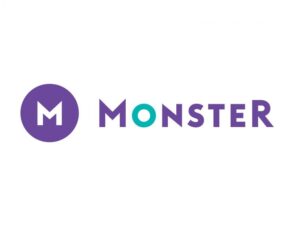What Employers Can Learn From 2023’s Labor Strikes

The number of striking workers more than doubled in 2023 with high-profile walkouts seen across industries from healthcare to manufacturing to education and more. Top demands from picket lines included better pay, increased staffing, and improved health and safety, and the results of these walkouts was a testament to the power that the labor force holds.
“The increase in strikes in 2023 stems from mounting frustration among workers regarding stagnant wages, lack of benefits, poor working conditions, and feelings of being overworked in the wake of the pandemic,” says Alex Adekola, CEO and founder of Remove My Mugshot. “Unions are gaining momentum as more workers demand better treatment.”
Having seen workers at Kaiser Permanente, SAG-AFTRA, and the United Auto Workers prove successful in their picketing, experts say a ripple effect is occurring. Already in 2024, Uber, Lyft, and Doordash workers went on strike, turning off their apps in an effort to receive better pay and working conditions. “I expect strikes to continue in 2024 as the economy cools and workers feel squeezed by inflation,” Adekola says. “Industries prone to poor treatment like retail, food service, and transportation will likely see more worker action…workers seem unafraid to withhold labor to achieve fair treatment.”
Of course, no employer wants to see internal issues escalate to a labor strike as it can cause them to experience disrupted operations, reputation damage, lower employee morale and productivity, and loss of skilled workers — all of which can impact recruitment efforts. To create a better employee experience and prevent future walkouts, we shared a few tips to help employers better navigate the year ahead.
Revisit Employee Pay and Benefits
Although inflation has begun to cool after reaching its peak in June 2022, the cost of living is still continuing to increase, up 3.2% in 2024. Yet, a Monster poll found that an astounding 81% of workers’ wages have not kept up with the rising cost of living. In fact, more than half of workers said they have not had a raise in more than a year.
When it comes to keeping workers happy, Ursula Mead, founder and CEO of InHerSight, a company reviews platform for women, says, “Providing fair and competitive pay is the starting point. Fair pay signals to employees that you value their work and their skill set.” To ensure wages are competitive, Monster’s salary tool can help employers quickly calculate average pay for the positions and markets in which they’re hiring. Beyond pay, employers should also look at the entire compensation package, including benefits like healthcare, retirement contributions, and tuition reimbursement.
Prioritize Employee Wellness
Ongoing labor shortages are taking a toll on mental health, with 3 out of 4 workers saying they feel burnt out as a result of staffing shortages impacting their workloads. This can create unsafe work environments, affect productivity, and lead to increased turnover or even labor strikes.
To improve working conditions and provide employees with a better work-life balance, Charles A. Krugel, a labor and employment attorney, says, “Progressive and astute employers are placing greater emphasis on employee happiness and satisfaction, and improving recruitment and retention by focusing on employees’ holistic health. More employers are offering more flexible work hours and conditions, more paid time off (PTO), and improving access to healthcare services. As happiness and satisfaction increase, so should loyalty, and turnover will decline.” Employers may also consider offering remote work — where it makes sense — as another Monster poll found that working from home can improve workers’ overall mental health and wellbeing.
Train Managers to Mitigate and Resolve Issues Early On
Picket lines don’t just form overnight. They stem from months, maybe even years of unanswered responses from management to the issues workers must deal with on a day-to-day basis. These issues are often first heard by managers, and if addressed swiftly, employers stand a greater chance of mitigating and resolving issues before talks of a strike even begin to take place.
“Managers need more training across the board,” Mead says. “They’re the first point of contact, the first people who hear when there are problems, and the people who are most likely to know that an employee needs support. They need regular training on what benefits your company offers, how to deal with conflict, how to recognize employees, and how to have hard conversations.” When hiring for management positions, employers should look for candidates that demonstrate soft skills like active listening, communication, and mediation. Offering conflict resolution workshops or seminars can further help existing leadership develop or improve upon these skills.
Stay on Top of Labor Market Trends
Monster aims to provide employers with the insight needed to keep businesses running like well-oiled machines. As you plan your recruitment and retention strategies, turn to Monster Intelligence for a deeper dive into data and labor market trends and what they mean for your business.


Leave A Comment